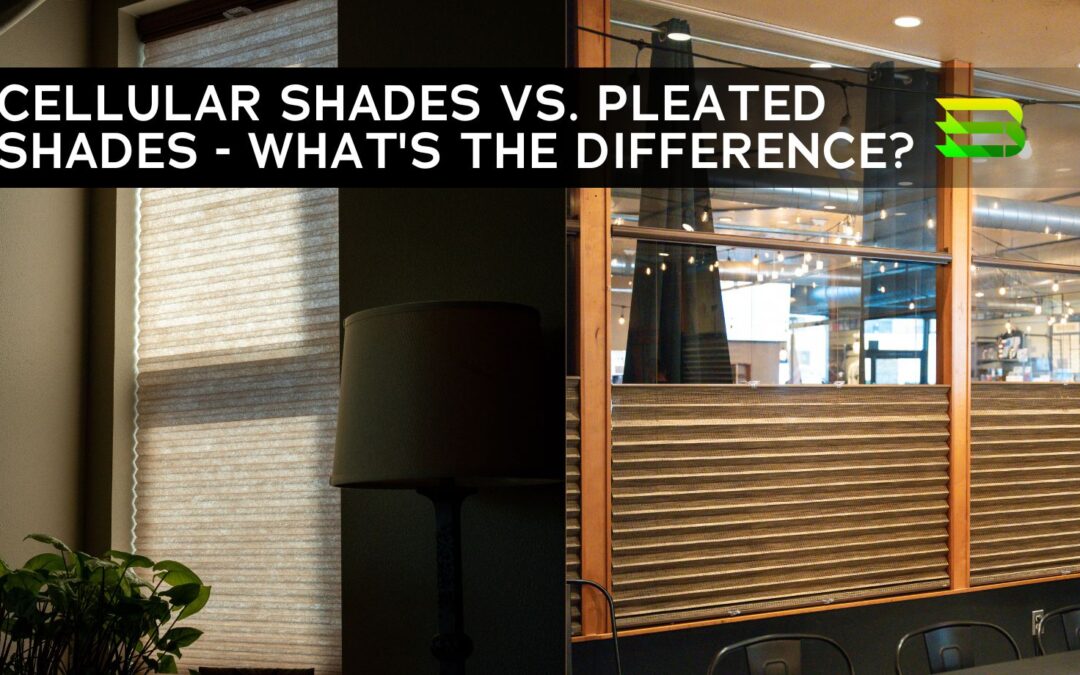When you look out over all the window treatment possibilities for your home, the options can be a bit overwhelming. In modern homes, two of the most popular window covering types are cellular shades and pleated shades. But what are they, and how do you know which one to pick? By comparing their features, Best Blinds & Awnings can help you get a better feeling for whether cellular shades or pleated shades offer the solution you’re looking for. Both have distinct advantages, but understanding their differences is the key to choosing what works for your space.
What Are Cellular Shades?
Cellular shades, known to some as honeycomb shades, are designed with a special honeycomb structure that traps air within their cells. This design creates an insulating barrier between your window and the room, making cellular shades an energy-efficient option. Depending on your insulation needs, the cells can be single, double, or even triple-layered.This innovative structure not only helps maintain indoor temperatures but also contributes to reducing energy costs throughout the year.
Benefits of Cellular Shades
1. Energy Efficiency: The insulating properties of cellular shades make them a top choice for homeowners interested in saving on heating and cooling bills. By trapping air in the cells, these shades keep your home cooler in the heat of summer and insulate your rooms to prevent heat loss in winter.
2. Sound Absorption: The cellular design also provides soundproofing benefits, making your home quieter by absorbing outside noise. For homes located on high-traffic streets or in noisy neighborhoods, the extra sound dampening is a welcome feature.
3. Versatility: Available in a wide range of colors, fabrics, and light control options (from sheer to blackout), cellular shades can complement any décor. Their sleek, modern look suits a variety of interior styles.
4. Light Control: Cellular shades offer excellent light-filtering options, allowing you to fine-tune the amount of natural light you let into your space while maintaining your privacy.
5. Compact Profile: When fully raised, cellular shades stack neatly at the top of the window, providing an unobstructed view outside.
What Are Pleated Shades?
Pleated shades are constructed from a single layer of fabric, folded in crisp, accordion-like pleats. Unlike cellular shades, pleated shades don’t have the honeycomb structure but are instead fabricated with a more straightforward, streamlined design. These shades are popular for their simplicity and ability to add texture to a room without overwhelming the existing décor.
Benefits of Pleated Shades
1. Affordability: Pleated shades are typically more budget-friendly than cellular shades, making them a practical option for homeowners looking to refresh their space without a significant investment.
2. Decorative Appeal: The crisp, pleated fabric adds a touch of elegance and texture, making pleated shades an attractive choice for those who want to enhance their interior design.
3. Light Control: Pleated shades are available in various opacity levels, from sheer to room-darkening, allowing you to customize the light and privacy in your space.
4. Easy Maintenance: Pleated shades are easy to clean and maintain. Most can be dusted or gently vacuumed to keep them looking fresh.
5. Slim Profile: Similar to cellular shades, pleated shades offer a slim profile when raised, allowing for a clear view of the outdoors.
Comparing Cellular and Pleated Shades
Energy Efficiency
When it comes to energy efficiency, cellular shades have the upper hand due to their honeycomb structure. The air pockets created by the cells act as a barrier, keeping heat or cold from passing through the windows. Pleated shades, while still offering some insulation, don’t provide the same level of energy efficiency as cellular shades.
Aesthetic and Design
Both cellular and pleated shades are available in an array of colors and fabrics, but they differ in their overall aesthetic. Cellular shades have a more modern, streamlined appearance, while pleated shades add a decorative touch with their textured fabric. The choice between the two often comes down to personal preference and your home’s existing décor.
Cost Considerations
If budget is a primary concern, pleated shades tend to be more affordable than cellular shades. However, it’s helpful to consider the long-term savings on energy bills that cellular shades can provide, potentially offsetting their higher initial cost.
Light and Privacy Control
Both types of shades offer excellent light control options, from sheer to blackout. However, the construction of cellular shades generally provides better coverage and insulation, making them a better choice for rooms where privacy and light control are especially important.
Which Should You Choose?
Deciding between cellular and pleated shades depends on your specific needs and preferences. If energy efficiency and sound absorption are your top priorities, cellular shades are the way to go. They provide superior insulation, making them ideal for homes in North Idaho, Eastern Washington, and the Lewis Clark Valley, where temperature fluctuations are typical. On the other hand, if you’re looking for a stylish yet budget-friendly option that adds texture to your room, pleated shades might be the perfect choice.
At Best Blinds & Awnings, we understand that choosing the right window treatment can be challenging. Our team of experts is here to walk you through your options and help you find the perfect solution for your home. Whether you’re leaning towards cellular shades for their energy efficiency or pleated shades for their aesthetic appeal, we’ve got you covered. Call us today to learn more!

